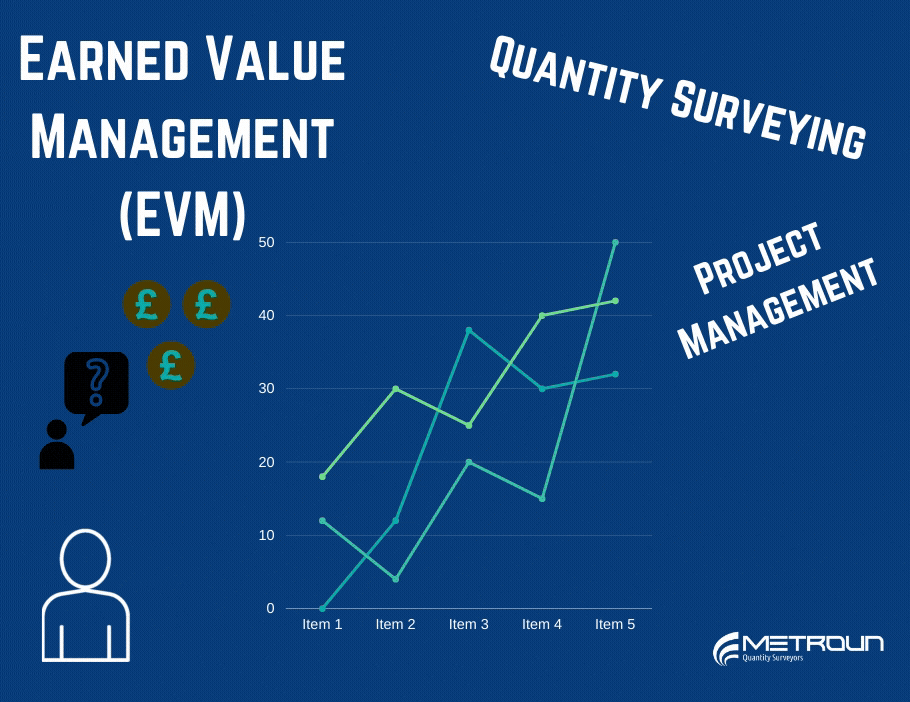Earned Value Management is a performance metric which can be used in order to manage a project, by answering the following questions:
· How much of the project has been completed so far?
· Is the project on schedule?
· Is the project within budget?
EVM essentially helps answer the question, “Have we got to where we want to be at this moment in time?”
It does this by generating and comparing the following three figures at a specific point in time throughout the lifecycle of a project:
· Planned Value (PV) – The cost estimated to have been spent at this point.
· Actual Cost (AC) – The real and true cost to date.
· And Earned Value (EV) – which shows how much of the budget and time should have been spent to get to this point in the project.

For example, the graph above shows the 3 different values plotted from the beginning of the project to week 4. You have the Planned Value in blue, the actual cost in orange and The Earned Value (in grey) is simply calculated by taking the actual activity duration’s and the planned activity costs and plotting in the graph.
It is important to note that Earned Value Management can only be used to assess the progress of a scheme at a specific point in time. From looking at the graph it is possible to calculate performance by looking at the disparity and differences between the values, termed variances. The variances that are possible to be calculated from this project management tool are:
Cost Variance – Helps to show whether a project is on budget
Schedule Variance – Helps to show whether a project is on programme

So, if you want to assess the performance at Week 4 of our landscaping project, the cost variance would be the actual cost at £5,000 minus the earned value at 3,500 giving a difference of £1,500. You can then divide the difference by the planned costs at this point (the £5,000):
1,500/5,000 = 0.3 (times 100 for the percentage) = 30% over budget.
The schedule variance which shows whether a project is on programme would be Earned Value minus Planned Value. For this Garden project it would be Earned Value at £3,500 – Planned Value at £7,000 totalling £3,500:
3,500/7,000 = 0.5 or 50% behind schedule.
The figures can also be turned into Indices where the performance is converted into a ratio rather than a percentage. The indices are useful as they provide a clear and concise visual on progress of a project.
· Cost Performance Index
· Schedule Performance Index
If you are perfectly on track to completing your dream garden, the above indices would be at 1. Above 1 would mean you are doing better than planned and below 1 means you are doing worse.
Unfortunately, this garden project currently has the following CPI & SPI’s:
CPI – 3500 (EV at week 4) / 5000 (AC at week 4) = 0.7
SPI – 3500 (EV at week 4) /7000 (PV at week 4) = 0.5
Again, confirming that it is running over programme and is over budget. Perhaps it is time to conduct some risk management and assess ways to pull the project back on track!
In addition to the above Indices, Earned Value Management allows for one other performance metric, namely, the Schedule Cost Index (SCI). This index combines both the CPI and SPI outlined above (rather than looking at them in isolation) giving a more robust and truer picture of a project in terms of programme and budget.
Earned Value Management is certainly a useful tool to have in the arsenal for project managers and Quantity Surveyors alike. If used at regular intervals throughout the project with accurate data, it undoubtedly has the potential to assist in controlling budget and programme overruns.
For a more visual explanation of how EVM works, check out our video below!






